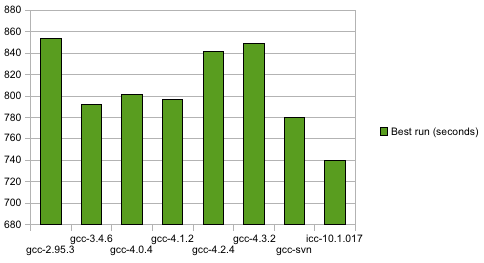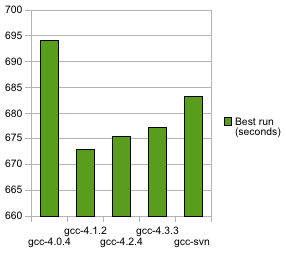I have been hanging out at the Linux Foundation Collaboration Summit. One theme I have heard tossed around is the matter of filesystems– ongoing filesystem research, the need to upgrade standard filesystems in Linux, etc. I admit that I don’t spend a lot of time thinking about filesystems (except when I’m writing FUSE drivers for filesystems that lack wide appeal). The filesystem is something that’s just “there” and should just work. Indeed, I have never had a major problem with any filesystem I have used while it is still considered modern. It is only when the next generation comes along that I understand the faults in the previous generation (journaled filesystems helped me understand that extensive integrity checking at boot time doesn’t have to be necessary; anything beyond FAT16 helped me understand that 8.3 filenames didn’t have to be the standard).
But there is a category of obsessed individuals who spend a lot of time thinking about filesystems and measuring what they’re doing and figuring out how they could be doing things better. And it’s a good thing that we have these people around, even though most of us largely view filesystems as a transparent cog in the machine of daily computing.
This got me to thinking about how it’s probably very likely that most computer users view multimedia codecs the same way that I view filesystems. An AVI file might contain Cinepak or MPEG-4 part 2 video, or any of 100+ video codecs. Most users don’t have a reason to care about the difference. This may help to explain why some people (not particularly well-versed in multimedia technology) take it for granted that Theora could easily replace H.264 in all applications where the latter is in use today.
They’re both video codecs, right?

